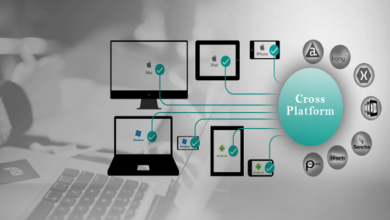OCR Software: Advanced Optical Character Recognition Solutions

Imagine transforming mountains of paperwork into searchable digital data in seconds—OCR software makes that possible. You’re likely familiar with basic text recognition, but today’s advanced solutions go beyond by accurately interpreting various fonts, languages, and even handwriting. Leveraging neural networks and cutting-edge algorithms, these tools don’t just digitize documents; they streamline workflows and cut costs. Curious about how these features can enhance your organization’s efficiency and decision-making? Let’s explore what makes advanced OCR technology a game-changer in document management and data accuracy.
What Is OCR Software?
OCR software, or Optical Character Recognition software, is a sophisticated technology that converts different types of documents, such as scanned paper documents, PDFs, or images captured by a digital camera, into editable and searchable data.
Historically, OCR has evolved significantly. Initially, it was designed for specific fonts and typesets, making early versions rather limited. In the 1970s, OCR systems were mostly used in banks for check processing.
Modern OCR software can handle a wide array of fonts, languages, and even handwriting. You’ll find that there are several types of OCR to consider. The most basic form is simple OCR, which uses pattern recognition to match characters against a stored database of images.
More advanced types, such as Intelligent Character Recognition (ICR), go further by recognizing handwritten text and adapting to different handwriting styles. Another type, Optical Mark Recognition (OMR), is used for identifying checkboxes and fill-in fields, commonly applied in surveys and tests.
How OCR Technology Works
To understand how OCR technology operates, you need to delve into the intricate algorithms that process and analyze visual data to convert images of text into machine-readable text. The process begins with image preprocessing, which enhances the quality of the input image. Techniques like noise reduction, binarization, and skew correction are employed to improve readability and ensure the accuracy of subsequent steps.
Next, the system performs text segmentation, dividing the image into distinct sections, such as blocks of text, individual lines, and finally, characters. This segmentation is crucial because it allows the OCR software to isolate and recognize each character separately, using various pattern recognition algorithms.
These algorithms compare the segmented characters against a database of known characters, using methods like feature extraction and machine learning to improve accuracy. The software then reconstructs the recognized characters into coherent text, correcting errors and refining the output through contextual analysis and language modeling.
Ultimately, OCR technology leverages sophisticated algorithms to transform visual data into text with high precision.
Understanding image preprocessing and text segmentation is key to appreciating how OCR systems achieve their remarkable accuracy and efficiency.
Key Features of OCR Software
Leveraging advanced algorithms and machine learning, modern OCR software boasts key features that significantly enhance text recognition accuracy and efficiency. One of the most critical aspects is image preprocessing, which involves several sophisticated techniques to improve the quality of the input image. By applying filters to remove noise, adjusting brightness and contrast, and correcting skewed or distorted text, the software ensures that the text extraction process starts with the highest possible quality image.
Another significant feature is the software’s ability to handle various fonts and languages. Multilingual support and font recognition are crucial for accurate text extraction across different documents. The software often uses neural networks to classify text regions and recognize characters, even in complex layouts or non-standard fonts.
Moreover, the integration of natural language processing (NLP) allows for better context understanding, which further refines text extraction accuracy. This means the software can interpret and correct errors by understanding the context in which the text appears.
Benefits of Using OCR
With the advanced capabilities of modern OCR software, users can experience substantial improvements in document digitization, data extraction, and workflow automation. By leveraging sophisticated algorithms, OCR software can convert various types of documents, such as scanned paper documents, PDFs, or images captured by a digital camera, into editable and searchable data. This transformation significantly reduces the time and manual effort required to process large volumes of documents.
Implementing OCR technology leads to considerable cost savings. By automating data entry tasks, you can minimize the need for manual labor, thereby reducing operational expenses. Additionally, OCR software facilitates quicker access to information, which can enhance decision-making processes and boost overall productivity.
Error reduction is another critical benefit of using OCR. Manual data entry is prone to human errors, which can lead to costly mistakes and inefficiencies. OCR algorithms, however, are designed to accurately recognize and extract text with high precision, drastically reducing the likelihood of errors. This ensures that your data is more reliable and consistent.
Moreover, integrating OCR software into your existing systems can streamline your workflow, allowing for seamless data integration and retrieval, ultimately enhancing your organization’s efficiency and accuracy.
Leading OCR Software Tools
When exploring leading OCR software tools, you’ll find that options like ABBYY FineReader, Tesseract, and Adobe Acrobat stand out due to their advanced algorithms and robust feature sets. ABBYY FineReader leverages sophisticated machine learning techniques to deliver high accuracy in text recognition across multiple languages. Its powerful text extraction capabilities make it an industry favorite, especially for handling complex documents with mixed content, such as tables and graphics.
Tesseract OCR, an open-source tool developed by Google, is renowned for its flexibility and extensibility. It utilizes LSTM (Long Short-Term Memory) networks, which are a type of recurrent neural network, to improve text recognition accuracy, particularly for handwritten and cursive text. Tesseract OCR is highly customizable, allowing you to fine-tune the recognition process by training it with specific datasets.
Adobe Acrobat, a staple in document management, integrates OCR capabilities seamlessly within its suite of tools. Its robust PDF handling and text recognition features are backed by Adobe’s proprietary algorithms, which excel in converting scanned documents into editable and searchable text.
OCR for Business Applications
Examining OCR software tools like ABBYY FineReader, Tesseract, and Adobe Acrobat reveals their transformative potential for various business applications, streamlining processes such as document digitization, data entry automation, and compliance management.
For instance, in invoice processing, these OCR solutions can extract key data points such as vendor names, invoice numbers, and amounts due. ABBYY FineReader leverages machine learning algorithms to enhance accuracy, reducing manual data entry errors and speeding up the accounts payable cycle.
When it comes to identity verification, OCR tools play a crucial role. Tesseract, for example, can process identity documents like passports and driver’s licenses, extracting information with remarkable precision thanks to its robust open-source algorithms. This capability is essential for businesses needing to authenticate customer identities quickly and securely, such as in banking and e-commerce.
Adobe Acrobat also excels in compliance management by converting scanned documents into searchable PDFs, ensuring that information can be easily retrieved and audited. Its sophisticated text recognition algorithms enable businesses to meet regulatory requirements for document retention and accessibility.
Enhancing Accessibility With OCR
OCR technology fundamentally enhances accessibility by transforming printed text into digital formats that are easily readable by screen readers and other assistive technologies. By converting printed materials into machine-encoded text, OCR software ensures that individuals with visual impairments can access written content through text to speech applications. This process involves sophisticated algorithms that analyze the structure of the text, recognize characters, and output a digital replica.
When you use OCR, the software employs advanced pattern recognition and machine learning techniques to accurately interpret diverse fonts and layouts. These algorithms are designed to enhance the readability of the text, making it suitable for screen readers which can then vocalize the content. The integration of OCR with text to speech technologies dramatically improves the user experience for those relying on auditory feedback.
Furthermore, OCR solutions are continually evolving, with improvements in accuracy and speed. They can handle complex documents, including multi-column layouts, handwritten notes, and various languages. This versatility ensures that users can access a broader range of materials, from textbooks to handwritten letters, without barriers.
Therefore, by leveraging OCR technology, you’re making content universally accessible, bridging the gap for those who depend on assistive technologies.
Improving Data Accuracy With OCR
Leveraging advanced OCR algorithms significantly boosts data accuracy by meticulously analyzing and correcting text recognition errors. You’ll find that modern OCR software employs sophisticated error correction mechanisms, allowing it to handle various fonts, languages, and even handwritten text.
By using large, diverse training datasets, these algorithms learn to recognize patterns and nuances in text, improving their ability to make accurate predictions.
In practice, error correction involves multiple steps. Initially, the OCR software scans the document and generates a preliminary text output. It then cross-references this output against its training datasets to identify inconsistencies.
For example, if a certain character frequently gets misrecognized in similar contexts, the software will adjust its algorithm to better handle such cases in the future. This iterative learning process ensures that each subsequent scan is more accurate than the last.
Moreover, many OCR solutions incorporate machine learning models that are continuously updated with new data. This dynamic updating process allows the software to adapt to new types of documents and text variations, further enhancing accuracy.
OCR in Document Management
By integrating OCR technology into document management systems, you’ll streamline the extraction, indexing, and retrieval of critical information with unparalleled efficiency. OCR algorithms analyze scanned documents and convert them into machine-readable text, enabling seamless document indexing. This process ensures that each piece of data is accurately tagged and stored, allowing for quick and precise retrieval.
Incorporating OCR means you can set up automated archiving workflows. These workflows leverage pattern recognition to categorize documents based on predefined criteria such as dates, names, or content keywords. This eliminates the need for manual data entry and reduces the risk of human error, ensuring your documents are consistently organized and easily accessible.
Advanced OCR solutions utilize machine learning to continually improve their accuracy and speed. They adapt to various document types and layouts, from invoices to legal contracts, providing robust support for a diverse range of document management needs. By using OCR, you can also enable full-text search capabilities within your document repository, making it easier to locate specific information without sifting through piles of paperwork.
In essence, OCR technology transforms your document management system into an intelligent, automated, and highly efficient operation, significantly improving productivity and accuracy in handling large volumes of documents.
Future Trends in OCR Technology
As we look ahead, it’s crucial to consider how advancements in artificial intelligence and deep learning algorithms will further revolutionize OCR technology. AI integration is set to enhance the accuracy and efficiency of text recognition by enabling systems to learn and adapt from vast datasets. This means you can expect OCR software to handle diverse fonts, languages, and even handwritten text with greater precision.
One key trend is real-time processing. By leveraging AI, OCR systems can instantly process and recognize text from images or videos as they’re captured. This capability is particularly valuable in applications like autonomous vehicles, where timely information extraction is critical. Additionally, real-time processing can significantly improve user experiences in mobile applications, enabling functionalities like instant translation and real-time data entry.
Moreover, deep learning algorithms will empower OCR to go beyond basic text recognition. Future systems will understand context, semantics, and even the intent behind the text. This will lead to more sophisticated document analysis and automated decision-making processes, thereby reducing the need for human intervention.
Conclusion
In a nutshell, embracing advanced OCR software solutions will let your organization hit the ground running. By leveraging neural networks and sophisticated algorithms, you’ll not only boost data accuracy but also streamline your workflow.
This leads to substantial cost savings and better decision-making capabilities. As OCR technology continues to evolve, staying ahead of the curve ensures your document management processes remain efficient and effective.
So, don’t wait—integrate OCR technology and transform your operations today!



